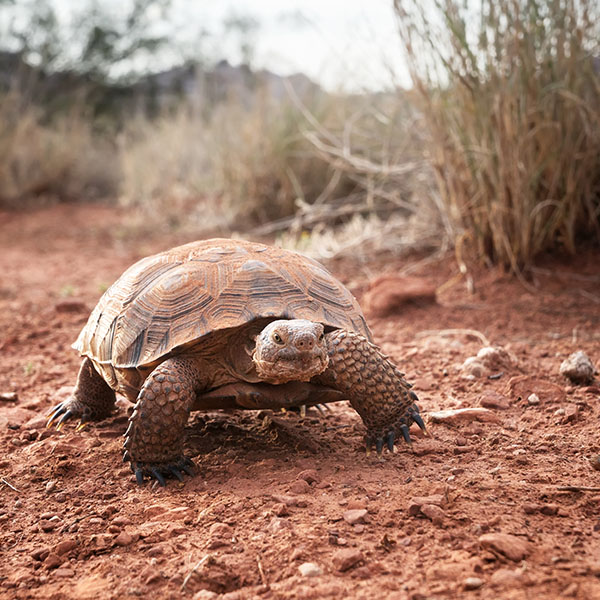As their name implies, desert tortoises are incredibly well-adapted for life in arid regions. They are built for digging and spend as much as 95% of their lives underground in order to reduce water loss and to regulate body temperature. These tortoises can survive for an entire year without direct access to a water source; instead, they get most of their hydration from plants such as grasses, wildflowers, and cactus pads. When it does rain, these hardy creatures take full advantage of the opportunity, drinking so much water that they can increase their weight by up to 40%! When threatened, one of their defense mechanisms is to empty their bladders, which leaves them vulnerable to dehydration. Please never disturb a tortoise in the wild unless they are in immediate danger, such as crossing a busy road.
This species is important for the desert ecology in part because they create shelter from the harsh element for lots of other species! Desert tortoises have been known to share burrows with antelope squirrels, woodrats, collared peccaries, burrowing owls, Gambel’s quail, rattlesnakes, Gila monsters, beetles, spiders, scorpions, and more!
Unfortunately, desert tortoise populations have declined by as much as 90% in many regions since the 1980s. Their primary threats include illegal collection for the pet trade, urbanization, habitat destruction, vehicle collisions, invasive plant and animal species, livestock grazing, and disease. They are also threatened by the release of unwanted nonnative tortoises by irresponsible pet owners. Desert tortoises can hybridize with species such as the Texas tortoise, which threatens the population stability of wild tortoises. Population recovery is slow because desert tortoises have high hatchling mortality rates and don’t start breeding until they’re 15-20 years old. Because of their vulnerability, there are strict regulations on where it is legal to acquire or house desert tortoises as pets.

